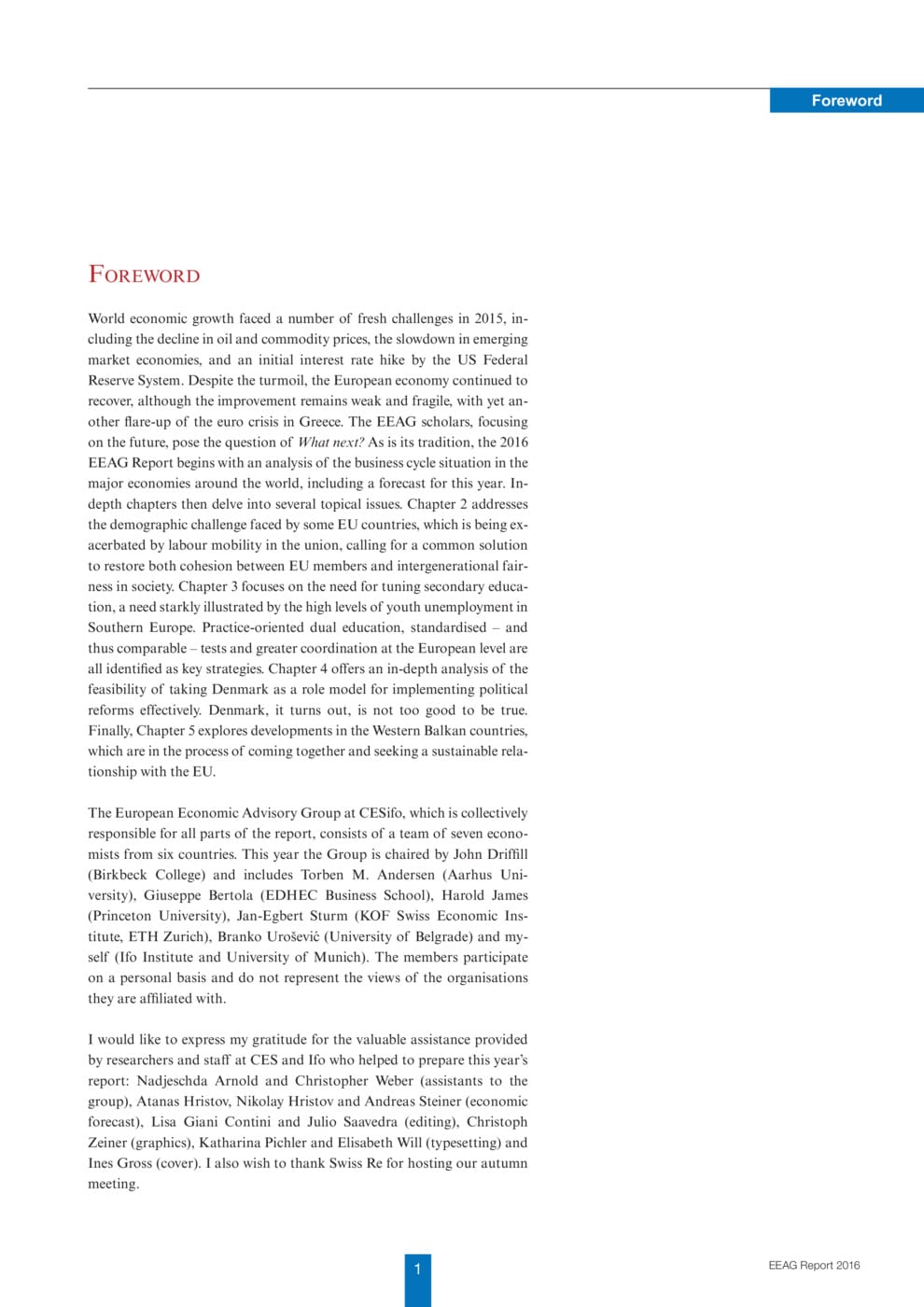Foreword
CESifo Group Munich, Munich, 2016
EEAG Report on the European Economy 2016, 01-02

World economic growth faced a number of fresh challenges in 2015, including the decline in oil and commodity prices, the slowdown in emerging market economies, and an initial interest rate hike by the US Federal Reserve System. Despite the turmoil, the European economy continued to recover, although the improvement remains weak and fragile, with yet another flare-up of the euro crisis in Greece. The EEAG scholars, focusing on the future, pose the question of What next? As is its tradition, the 2016 EEAG Report begins with an analysis of the business cycle situation in the major economies around the world, including a forecast for this year. Indepth chapters then delve into several topical issues. Chapter 2 addresses the demographic challenge faced by some EU countries, which is being exacerbated by labour mobility in the union, calling for a common solution to restore both cohesion between EU members and intergenerational fairness in society. Chapter 3 focuses on the need for tuning secondary education, a need starkly illustrated by the high levels of youth unemployment in Southern Europe. Practice-oriented dual education, standardised – and thus comparable – tests and greater coordination at the European level are all identified as key strategies. Chapter 4 offers an indepth analysis of the feasibility of taking Denmark as a role model for implementing political reforms effectively. Denmark, it turns out, is not too good to be true. Finally, Chapter 5 explores developments in the Western Balkan countries, which are in the process of coming together and seeking a sustainable relationship with the EU.
Included in
The EEAG Report on the European Economy 2016: What Next?
CESifo Group Munich, Munich, 2016